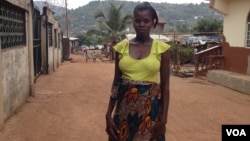Save the Children reports this week that the urban divide between wealthy mothers and poor mothers around the world is growing wider.
The international organization’s “State of the World’s Mothers 2015” focuses this year on the challenges raising children under five years of age and reveals the global rankings of the best and worst places to be a mother.
The report says the best place to be a mother is Norway. For the second year in a row, the worst place is Somalia, where conditions are grim and mothers have little access to basic necessities.
The report also shows that despite the relative affluence of the United States – where the nation celebrates Mother’s Day on May 10 – the well-being of mothers is on a steady decline. The report showed that U.S. moms have descended to a ranking of 33 out of 179 countries.
Resources in short supply south of the Sahara
Resources are key to being a good mother and they are in short supply in many countries.
“Access to clean water and sanitation, security, decent housing, they’re all unique challenges particularly for mothers who are living in urban slums,” says David Oot, a Save the Children senior advisor for health and nutrition, “and that happens to be where the bulk of urban populations in sub-Saharan Africa do live.”
The report shows that the 10 bottom-ranked countries are mostly African countries. These countries suffer from political and economic instability, conflict and poor governance.
Oot said mothers in politically and economically unstable countries need access to preventative and curative health services for themselves, their newborns and their children. And these resources are not available “or if they are, they tend to be more available in the private sector and many mothers - in fact, especially poor mothers - can’t afford that care from private providers.”
For many mothers even water and sanitation are not available or they may be hard to access, requiring a great deal of time and effort.
Ethiopia cuts child mortality by half
On the bright side Oot highlighted some African countries have made significant progress in reducing death rates of children under five since 1990.
Oot cites three African countries – Malawi, Rwanda and Ethiopia - that are on track to meet the Millennium Development Goal for reducing under-five deaths by two-thirds.
In fact, he said, Ethiopia and Malawi have already met that goal. And they’ve done it, he said, by “ensuring that women actually deliver with a skilled birth attendant present; that they achieve and sustain high rates of immunization coverage; that there’s improved access and use of treatment for diseases such as pneumonia and malaria.”
In addition, breastfeeding is encouraged and supported in these countries.
Ethiopia’s capital, Addis Ababa, is one of the best examples of providing services for the urban poor mother, Ott said.
“This is quite remarkable. The gap actually has declined by almost half. That is, the gap between the richest and poorest with respect to under-five mortality, and under-five mortality itself has been reduced by over 50 percent between the years 2000 and 2011,” he said.
More work still needs to be done to provide support for mothers in sub-Saharan Africa. He said one of the challenges is offering support systems in urban settings to mothers and children who moved from rural communities where those family support systems existed. These support systems include mental health and the inclusion of men and boys as part of the support process.
Oot said Save the Children has been seeking to address these challenging and neglected issues in urban settings in a number of countries in sub-Saharan African and around the world.







